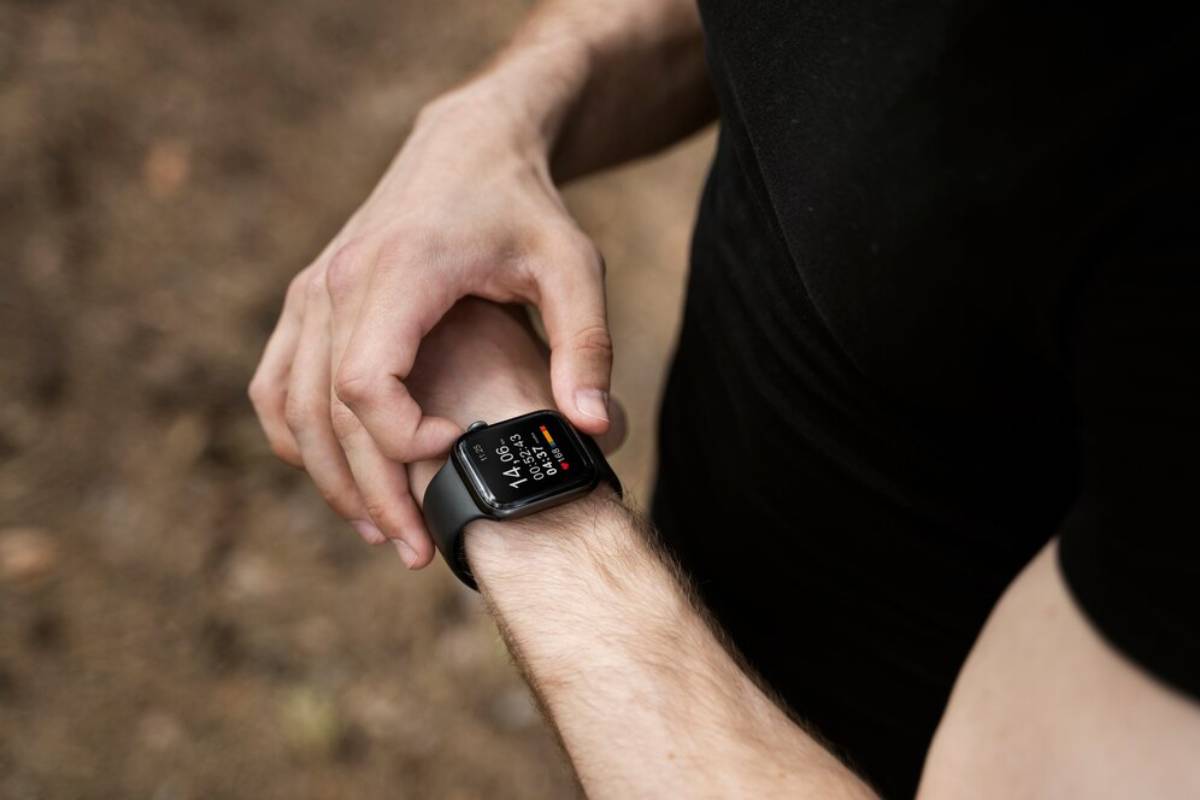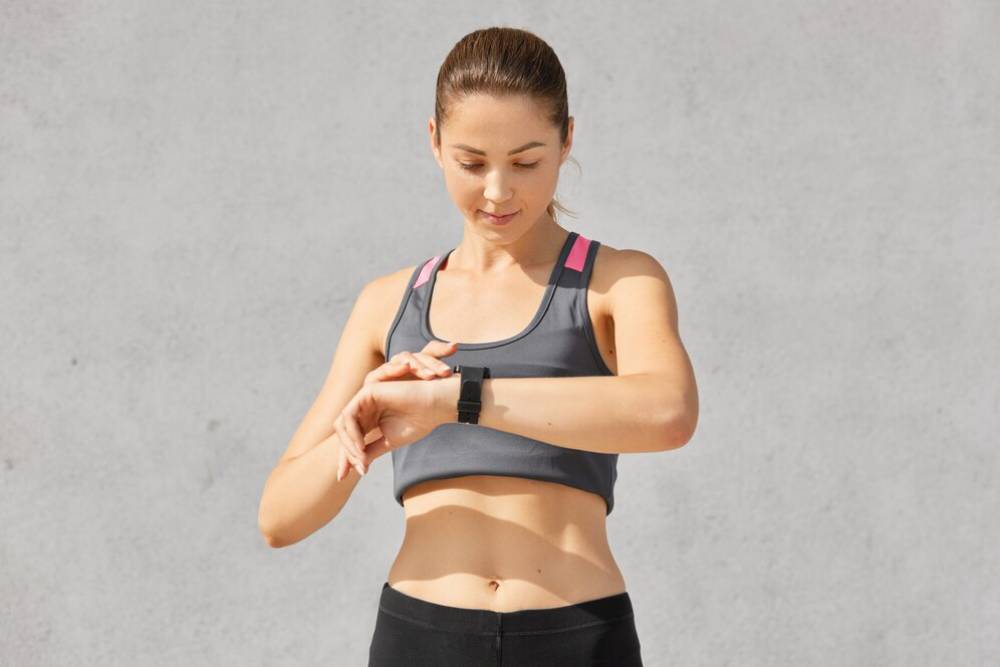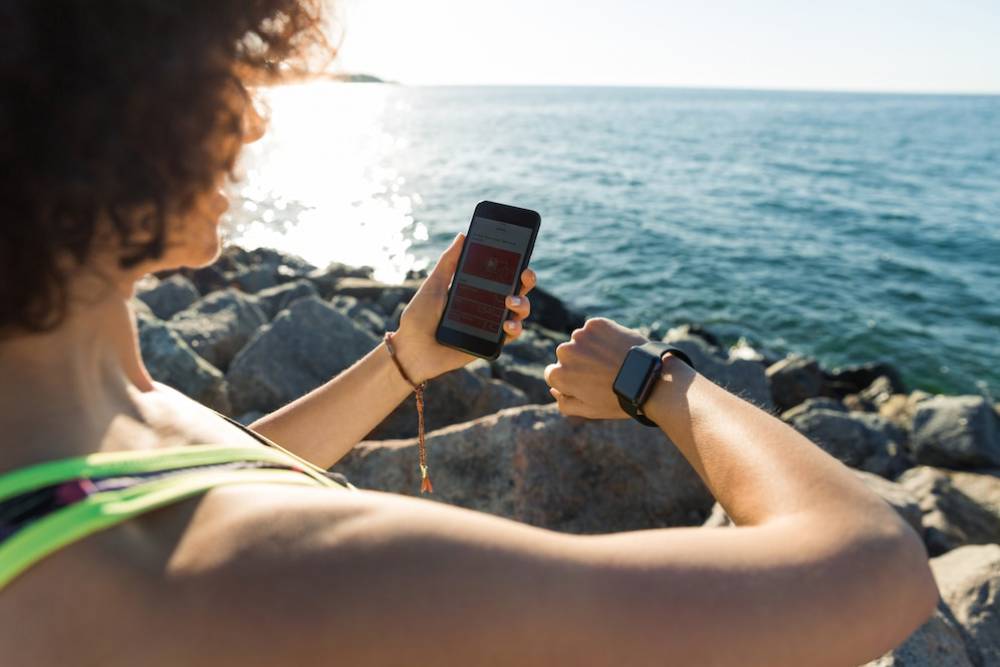
Wearable Devices to Monitor Your Exercise Progress: Revolutionising Fitness Tracking
In today’s fast-paced world, staying fit and healthy is a top priority for many. Thanks to technology, it’s easy to track your exercise progress with wearable devices. These gadgets, known as fitness wearables or activity trackers, are now key to our fitness journeys. But what makes them essential? How do they improve our health monitoring? This guide looks at wearable devices. We’ll cover their benefits, features, and how they change fitness.
Fitness wearables have changed a lot. They went from basic pedometers to advanced devices that track many health metrics. Whether you’re a pro or just starting out, these devices offer helpful insights. They can help you adjust your workouts, set realistic goals, and improve your health.
Key Benefits of Fitness Wearables
Why It Matters

Fitness wearables aren’t merely sleek gadgets; they’re your health’s best allies. These savvy devices unveil a treasure trove of insights about your activities and well-being. Here’s the scoop on their significance:
- Tailored Health Tracking: Fitness wearables provide personalised feedback on your daily hustle. They tally steps, calories, heartbeats, and sleep cycles, crafting a vivid health portrait. This knowledge empowers you to choose wisely for your lifestyle.
- Motivation and Accountability: Activity trackers are like personal cheerleaders, sparking enthusiasm for movement. Set goals and relish real-time updates that keep you on your toes. Many devices feature social connections, allowing you to challenge friends and ramp up motivation.
- Insightful Data Analysis: Fitness wearables gather and dissect a wealth of data, revealing insights that can enhance wellness. Tracking heart rate variability highlights your cardiovascular status. Meanwhile, monitoring sleep uncovers patterns that impact recovery and rest.
Real-Life Applications

Let’s dive into the tangible benefits of fitness wearables—real-life applications that hit home:
- Weight Management: Users can track calorie intake and expenditures with precision. Many wearables effortlessly sync with nutrition apps, giving you a complete picture of your diet and exercise balance.
- Enhanced Athletic Performance: Athletes harness devices to monitor training intensity and recovery. With insights into heart rate zones and VO2 max, they fine-tune their workouts for peak performance.
- Chronic Disease Management: For folks facing chronic conditions like diabetes and hypertension, wearables are lifesavers. They continuously monitor vital signs, alerting users to potential health hiccups for swift intervention.
Step-by-Step Guide to Using Fitness Wearables
Getting Started with Activity Trackers
Choose the Right Device
Selecting the ideal fitness wearable can feel like wandering in a tech jungle. But fear not—focus on these factors:
- Features: Pinpoint what metrics matter most to you. Looking for a basic step counter? Or craving advanced health metrics like ECG or SpO2 tracking?
- Ensure compatibility with your smartphone and any apps you plan to use.
- Design and Comfort: Since this device will become your daily companion, comfort is key. Pay attention to size, weight, and wristband material.
Set Up Your Device

Once you’ve selected your wearable, follow this smooth setup roadmap:
- Charge the Device: Most wearables come with a proprietary charger. Power up your device before diving in.
- Download the App: Most devices require a companion app for setup and data syncing. Download the app and create an account with ease.
- Pair the Device: Use the app to connect your device to your smartphone via Bluetooth.
- Customise Settings: Set fitness goals, personalise notifications, and choose metrics to track.
Understand the Metrics
Fitness wearables serve up a feast of metrics. Here’s a smorgasbord of the essentials:
- Steps: Keep a tally of your daily strides. Aim for at least 10,000 steps to keep your health in check.
- Heart Rate: Monitors your heart rate in real-time, offering insights into your cardiovascular health.
- Sleep Tracking: It analyses your sleep patterns, revealing how well you rest and rejuvenate.
- Calories Burned: Displays the calories torched based on your activities and personal details.
Integrate with Other Apps
Maximise your fitness wearable by linking it with other health apps. This synergy offers a broader view of your well-being, propelling you toward your goals.
Additional Expert Tips & Common Mistakes to Avoid
Best Practices
- Update Your Device: Software updates are your friend. These tweaks enhance performance and accuracy. Keep your device current.
- Set Realistic Goals: Push your limits but avoid setting the bar too high. Unrealistic aspirations can lead to frustration. Start small, and gradually raise your targets.
- Listen to Your Body: While data is a goldmine, your body’s signals deserve attention. If you’re fatigued or unwell, take that well-deserved break. Consult a healthcare professional if need be.
Common Mistakes and Misconceptions
- Over-Reliance on Data: While fitness wearables offer invaluable insights, don’t treat them as gospel. Use the data as a guide while listening to your physical signals.
- Ignoring Non-Quantifiable Factors: Mental health, stress, and nutrition are vital to your well-being. Weave these considerations alongside your wearable data.
Advanced Insights and Expert Recommendations
Beyond Basic Tracking
Ready to elevate your fitness tracking? Check out these advanced insights:
- Heart Rate Variability (HRV) measures the time between heartbeats. It shows how healthy your autonomic nervous system is. It also offers clues about stress and recovery.
- VO2 Max: This metric reveals how efficiently your body uses oxygen during exercise—a key indicator of heart health and training intensity.
- Wearables that track ECG and SpO2 provide crucial insights into your heart health and oxygen levels.
Industry Perspectives
The fitness wearable landscape is racing ahead, teeming with innovation:
- AI and Machine Learning: Future wearables might use AI for personalised coaching and health insights just for you.
- Integration with Healthcare Providers: Stay tuned—wearables are becoming smarter. They now connect easily with healthcare systems. This helps manage chronic conditions and supports preventative care.
Conclusion: The Future of Fitness Wearables
Fitness wearables have revolutionised our view of health and fitness. They deliver tailored, data-driven insights that empower users to manage their health. Whether you love fitness or want to feel better, a wearable device is your helpful friend.
Technology is changing fast, and these devices might greatly change our health landscape. So, why not take the plunge? Discover how these powerful tools can elevate your fitness journey. Your journey to better health starts with one step. A fitness wearable is your reliable partner on this adventure.